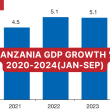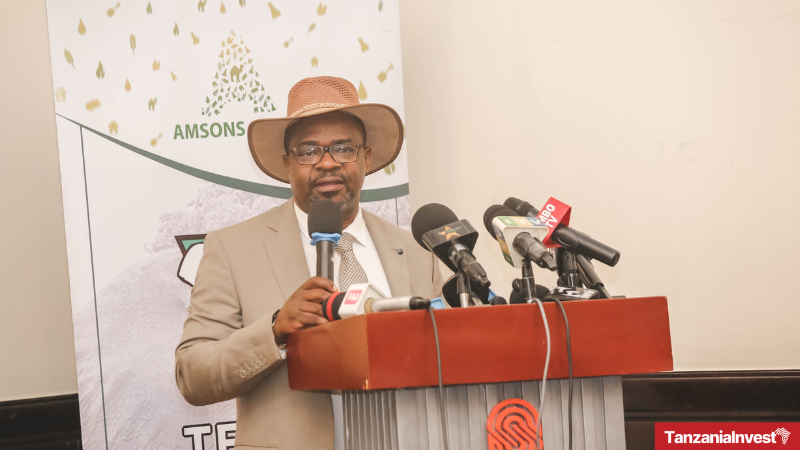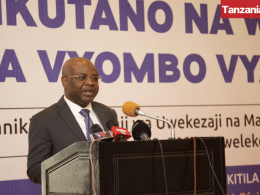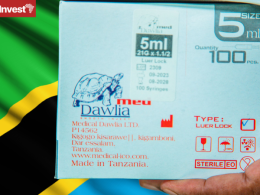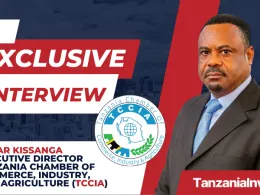The Government of Tanzania through the Treasury Registrar’s Office and AMSONS Company has reached an agreement to invest US$ 320 million (over TZS 800 billion) in expanding the Mbeya Cement Plant and establishing a new cement plant in Tanga.
This announcement was made on 15th October by Tanzania’s Treasury Registrar, Nehemiah Mchechu, during a press briefing in Dar es Salaam.
The Tanzanian Government holds a 25% stake in the Mbeya Cement Plant through the Treasury Registrar. AMSONS Group owns 65%, while the National Social Security Fund (NSSF) holds the remaining 10%.
According to Mchechu, US$ 190 million (approximately TZS 513 billion) will be allocated for the construction of the new Tanga plant, while US$ 130 million (TZS 351 billion) will be used for the expansion of the Mbeya Cement Plant.
Mchechu highlighted: “As we speak, we have already made key decisions. Remaining tasks involve management activities, including finalizing the business plan and other financial arrangements.”
The project, expected to be completed within two to three years, will increase clinker production which is a key raw material for cement manufacturing.
The Mbeya plant’s clinker production is set to rise from 1,000 tons per day to 5,000 tons per day and the new Tanga plant will have a clinker production capacity of 5,000 tons per day, bringing the total production to 10,000 tons daily.
Mchechu noted that this production increase will strengthen Tanzania’s position in the Southern Highlands market, which Tanzania has consistently supplied over 70% for many years.
He added that this investment would also facilitate entry into neighboring markets such as Zambia, Malawi, and the Democratic Republic of Congo (DRC).
On his part, AMSONS’ Finance Director, Ahmed Mhada, highlighted that the expansion and new plant will increase cement production from 1.1 million tons per year to 4.2 million tons per year.
Mhada highlighted: “This expected production increase will multiply dividends tenfold compared to what the government received last year.”
Mhada elaborated that the government of Tanzania, which holds a 25% stake through the Treasury Registrar’s Office, received TZS 3 billion in dividends last year, following a decade-long gap in dividend payouts.
He added that if production increases as expected, the government anticipates receiving an average of TZS 30 billion in dividends once the project is completed.
Mhada mentioned that the expansion of the Mbeya plant and the construction of the new Tanga plant would generate 12,000 direct and indirect jobs.
The acting Chairman of the Board of Directors of Mbeya Cement, Prof. Siasa Mzenzi, expressed gratitude to President Samia for fostering an investor-friendly environment in Tanzania.
“What the President is doing attracts investors to Tanzania. We are ready to oversee this investment for the broader benefit of our nation and its people,” affirmed Mzenzi.
Tanzania’s Cement Industry
According to the National Bureau of Statistics (NBS), Tanzania’s cement production reached 7,598,073 tons in 2022, a 14.9% increase from 6,614,359 tons in 2021.
Cement consumption also rose to 7,532,173 tons, up from 6,863,004 tons, reflecting a 9.8% increase.
The export market for Tanzanian cement surged to 632,726 tons in 2022, an increase of 43.2% from the 441,828 tons exported in 2021.
In contrast, cement imports fell to 566,826 tons from 690,474 tons the previous year, indicating a decrease of 17.9%. This decline can be attributed to the increased capacity of local production and effective import substitution strategies.
Several factors have contributed to this growth in the cement sector. Ongoing mega projects such as the construction of roads and bridges—including the Kigongo-Busisi Bridge—and the development of the standard gauge railway have significantly boosted demand for cement.
Additionally, rapid urbanization has led to increased residential and commercial construction activities across major cities.



